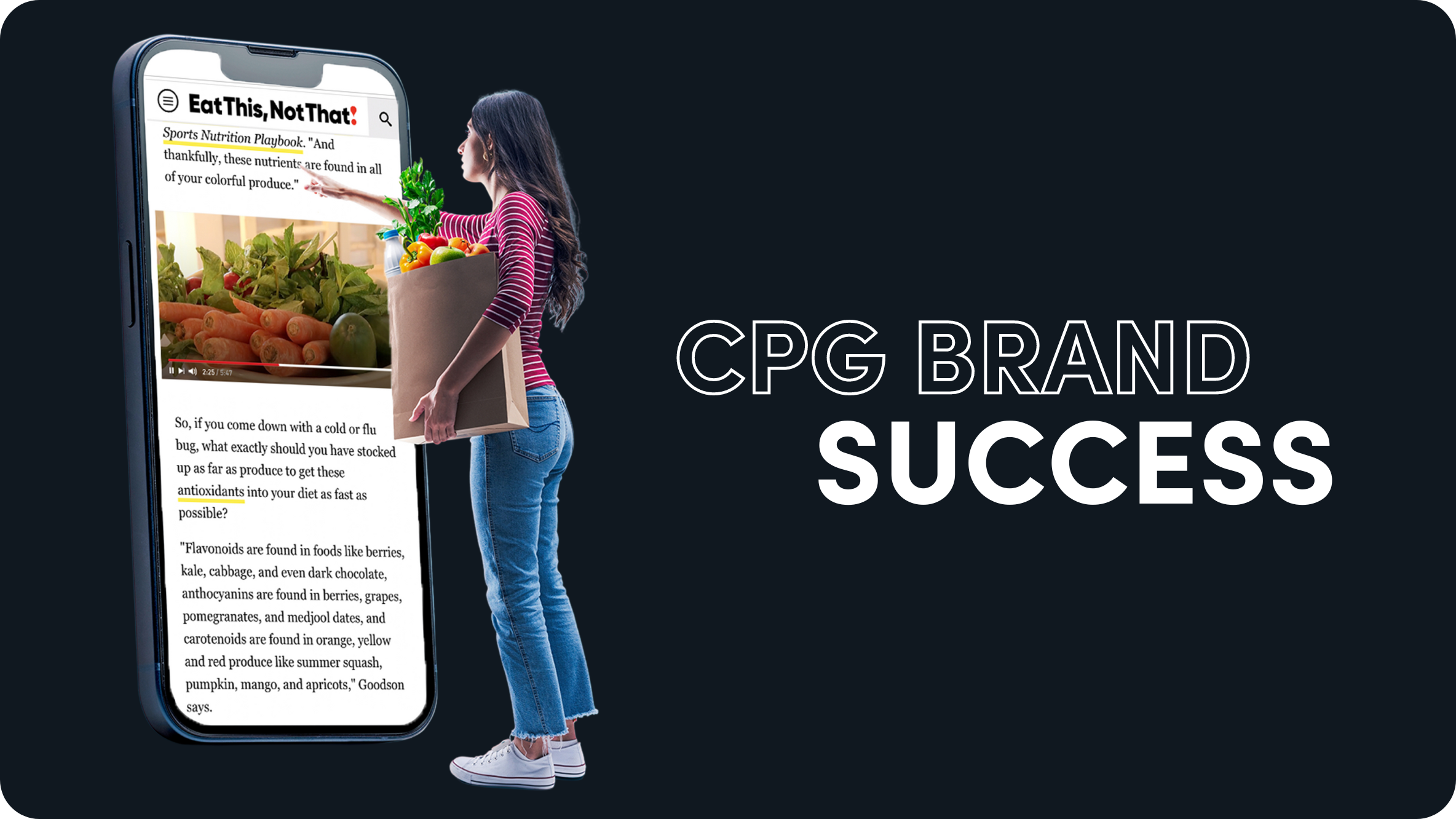The Attention Equation: Expert Tips that Drive Brand Outcomes

Human attention is a finite resource, with the largest companies in the world fighting for it among consumers. When misused, it easily slips away. Recent studies underline this reality, revealing a 69% decline in consumer attention over the past decade, intensified by the volume of content choices available today. This shift presents a compelling challenge to brands, as they must cultivate multiple touchpoints across the user journey and drive meaningful interaction before yielding a desired result.
But what’s the real value of attention as a metric? And can it truly become the pulse of successful marketing and audience engagement? We sought insights from leaders across different industry segments to get their take and help unlock its potential.
Watch the video below and then journey on with five highlighted tips.
Tip #1: Define what attention means for your brand
As an evolving metric, understanding the value of attention is crucial. Is it about capturing its intensity or sustaining it over time? Perspectives may differ, but one thing is certain: attention is designed to be creative and unique to brand needs, laying the groundwork for outcome-driven results. By delving deeper into the measurement of digital campaigns, marketers get a more precise, future-proof understanding of what makes their campaigns impactful.
“Lots of people talk about meaningful media, but what we really can’t get away from is making attention a meaningless currency. When we talk about optimization… it’s really about the KPIs and objectives, and really it’s going to be unique to every single company based on their starting point and where they want to get to. So the key is to get the optimal amount of attention, but what that optimal looks like will be very different based on the objectives they want to address.” – Tanwa Edu, Chief Strategy Officer, Lumen
Tip #2: Evolve your measurement for media quality
Traditional metrics have become far less efficient, opening the door for the industry to explore advanced methodologies that merge academic insights with algorithmic approaches. In fact, 96% of advertisers have started to embrace change by integrating attention metrics into some of their media buys. The reason is simple: advertisers recognize that attention empowers them with better-informed decisions for better campaign efficacy, where high attention correlates to strong business outcomes. That said, the industry is still in the process of understanding how to use it to its fullest potential.
“We have to complement what’s already in place – what systems and measures agencies and brands are working with. Attention is another dimension that fills some of the gaps to make better-informed decisions and drive better media efficiency.” – Alex Khan, Global EVP of Partnerships & Strategy, Amplified Intelligence
“Blending all of these measures together is probably the biggest challenge that we have. The question I always ask is to what extent can I prove the commercial utility of whatever it is we’re doing, whether it’s a new measurement technique or whether it is the metric in and of itself.” – Peter Grant, Head of Media Effectiveness, Boots UK
“We have seen pretty much 99% of the time you are able to drive better outcomes with AU (Attention Unit) than with business as usual (metrics). There’s evidence at the top of the funnel; evidence at the bottom of the funnel, we’ve seen it very consistently. So I would encourage everyone to do that as the first step, run a test, understand what the cost of incremental outcomes is when you’re using today’s metrics versus when you’re using attention metrics.” – Marc Guldimann, Founder & CEO, Adelaide
Tip #3: Attention ties to context, emotional response, distinction
Creating memorable ad experiences is an art that revolves around the power of emotions. The best ads, time and again, weave a connection that ignites and lasts beyond the experience itself. However, it’s when emotion is tied to the context and narrative of your brand, that you have the perfect framework for creative attention.
“One of the problems with digital media is that we get so focused on the right person and the right time, that we forget about the right place. A quality environment. Making integrating media a focus creates a huge positive halo effect. That’s where attention becomes hugely impactful in our business.” – Andrew Spurrier-Dawes, Head of Digital & Precision EMEA, Wavemaker
“When it comes to emotion, how do you make the emotional response as personal as you can? We want to make sure our creative is playing the longer game. Einstein once said that compound interest is the eighth wonder of the world. He who understands it, earns it… he who doesn’t, pays it. It’s about being stable in strategy, fresh in execution. Just be consistent, put it out there and see the effects.” – Arjoon Bose, Head of Creative & Growth, General Mills
“The challenge is to have that consistent difference in a way that flexes and breathes across different contexts and environments – so that you’re not boring the pants off your audience. You’re not just competing with other ads, you’re competing with pop culture. If you don’t have that consistent difference, done in your own way, you’re essentially doing yourself a disservice.” – Dom Boyd, Managing Director UK Insights & Marketing Effectiveness, Kantar
Tip #4: Know your audience to captivate their attention
Publishers find themselves in a relentless quest to captivate their readers, driving them to constantly reinvent their strategies. In that pursuit, knowing your audience is key, ensuring readers are having the most positive experience with the content they consume – or as Anthony Crocker coins it, “Engage versus Enrage.”
Delivering those positive experiences involves delving into how audiences give their attention and interact with ads, examining their responses, and leveraging sophisticated models beyond last-click attribution. For publishers like The Telegraph, continuous data analysis is crucial, enabling them to enhance the impact of their content. The more positive experiences they have on those pages, the more likely they are to spend their active attention in that environment.
“There’s a lot of noise in the digital space at the moment. Many people are trying to be everything to everyone. Instead, try and really think about who your key audience is, and what your key values are, and make sure that everything that you’re putting out there aligns with those values… We knew that 90% of our readers trusted our content, and as a proxy of that, trusted the advertising they would see on our pages. As a result of that, 55% of our readers explicitly said they had made major purchase decisions off the back of seeing something in The Telegraph. That’s a great environment for advertisers to be in.” – Anthony Crocker, Head of Commercial Success Strategy, The Telegraph
Tip #5: Think about it in terms of short and long-term performance
The gap between brand building and brand performance is shrinking, and at the heart of it is the metric of attention to connect the two schools of advertising. Attention functions as the catalyst for brand building, breathing life into narratives, emotions, and brand stories. For brand performance, attention serves as the driving force behind swift, measurable actions. Captivating your audience isn’t just about making them aware of your brand; it’s about motivating them to take meaningful steps along the consumer journey.
“No consumer sits at home and says ‘I’m going to look at this branding ad one way and this performance ad another.’ Performance is often seen as the poor relation – it’s very price-driven and outcome-driven. But actually, if you do it right – and it doesn’t have to be overly fancy – it can be really effective at driving brand metrics as well.” – Dierdre Tippen, Head of Performance Marketing & Planning, Three UK
“Certainly, from a business intelligence role, we can link attention as an important metric to immediate sales…I think if this is going to be a metric that sticks for the long term though, we need to start to appreciate how it can be involved in brand building or kind of further up the consumer journey for where there’s less research.” – James Wrigley, Head of Business Intelligence, Global Senior Strategy Director, Zenith
Attention is merely scratching the surface of its impact within the advertising industry, sparking curiosity about its untapped potential in reshaping how brands connect with their audiences. Dive deeper into this emerging metric by exploring insights from our Attention Playbook, or watch the full panel discussion here.











